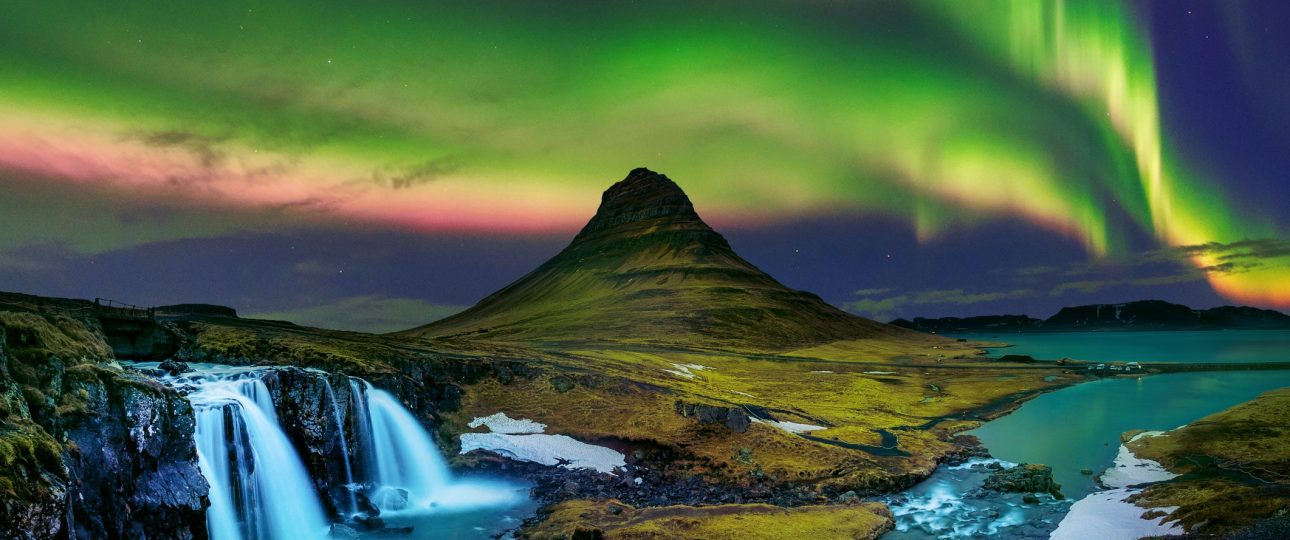The Enchanting Northern Lights of Iceland
What Makes Iceland’s Northern Lights Unique?
The Northern Lights, or Aurora Borealis, are a captivating natural phenomenon visible in high-latitude regions. Iceland stands out as a prime location for viewing due to its geographical position and favorable conditions. Here’s why Iceland offers a unique Northern Lights experience:
- Geographic Advantage: Iceland is located under the Northern Lights oval, an area with a high probability of seeing the Lights. This oval covers parts of Alaska, Canada, Greenland, and Northern Europe, including Iceland.
- Minimal Light Pollution: Iceland’s remote and sparsely populated areas provide dark skies, essential for viewing the Northern Lights. This lack of light pollution allows for a clearer view of the vibrant colors.
- Unpredictable Displays: The Northern Lights in Iceland are known for their unpredictability. Each display is unique, adding an element of surprise and excitement to the experience.
- Stunning Landscapes: Iceland’s dramatic landscapes, including snow-capped mountains and volcanic terrains, create a breathtaking backdrop for the Northern Lights.
Best Time to Visit Iceland for the Northern Lights
Timing is crucial when planning a trip to see the Northern Lights in Iceland. The optimal period is from September to March, with peak activity from October to February. Consider these tips to enhance your viewing experience:
- Clear Skies: Check the weather forecast for clear skies, as clouds can obstruct the view of the Lights.
- Darkness: Seek out locations away from city lights. The Icelandic countryside offers some of the darkest skies for optimal viewing.
- Patience: Be prepared for long waits. The Lights can appear at any time during the night, and patience is key to witnessing them.
- Avoid Full Moon: The brightness of a full moon can diminish the visibility of the Northern Lights. Plan your visit around the new moon for the best conditions.
How to Get to Iceland
Reaching Iceland is straightforward, with several travel options available:
- Flights: Keflavik International Airport, near Reykjavik, is the main entry point. Numerous airlines offer direct flights from major cities worldwide.
- Stopover Packages: Consider stopover packages offered by airlines like Icelandair, allowing you to explore Iceland en route to other destinations.
- Ferries: For a unique journey, ferries connect Iceland with countries like Denmark and the Faroe Islands, offering a scenic sea travel experience.
Local Transportation in Iceland
Once in Iceland, you’ll need to navigate the country to explore the Northern Lights and other attractions. Here are some transportation options:
- Renting a Car: Renting a car provides flexibility to explore at your own pace. Be mindful of winter driving conditions and check road conditions regularly.
- Guided Tours: Join a guided tour for a hassle-free experience. Local operators offer Northern Lights tours with knowledgeable guides.
- Public Transportation: In cities like Reykjavik, buses and taxis are available, making it easy to explore urban areas.
With this guide, you’re equipped to plan an unforgettable trip to witness the Northern Lights in Iceland. Embrace the adventure and enjoy nature’s spectacular light show.




